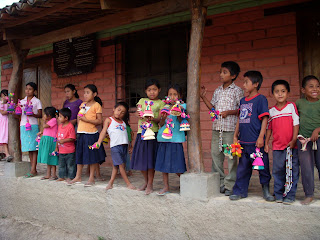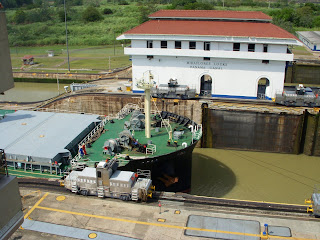Our destination was the la Pintada Maya Chorti community, so isolated that some children walk 2 hours each way to study.
The Pinata got to ride up in a truck while I rode a pregnant horse named Princessa. I chatted amiably in Spanish with Wilson, the son of the stable owner and a student in College (private and not to be confused with escuela or school). Wilson loves horses and math.
The Guatemala national anthem is arguably the longest in the world. These children had to sing it in their native Mayan language before they were allowed to sell us dolls or beat the pinata.
The Japanese taught the women to make cornhusk dolls as a way to earn income for their families. Our guide Ivania bought us each a doll from the co-op. She explained that the proceeds from dolls sold in the co-op get evenly distributed among all women who participate. However, money from sales made by an individual go directly to that family. That is why the children were so eager to sell us their dolls rather than let us select from the co-op display shelves.
I may have had to ride a horse to get here, but at least I didn't get the stuffing beat out of me!






































